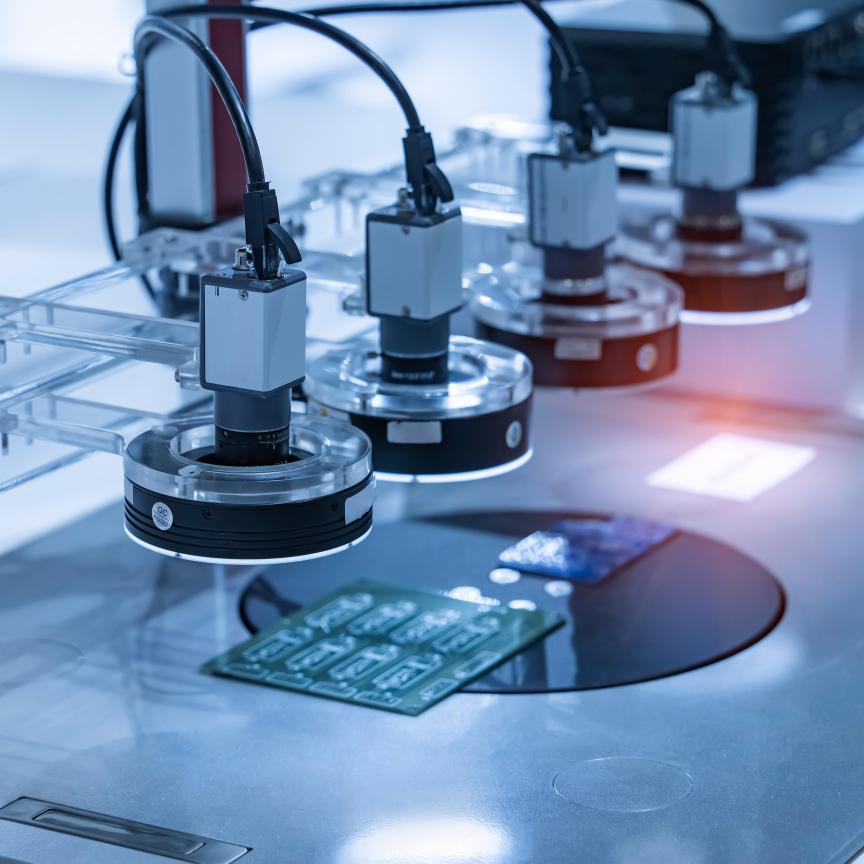A number of scientific projects are underway at HECToR, the UK supercomputing facility funded by the UK Research Councils and hosted at the University of Edinburgh, involving eggshells, substance mixing, lasers, and the Earth's core temperature. The projects were designed to challenge the machine’s capabilities during its first six months of operation since its launch in January 2008.
Computer simulations and calculations complement theory and experiment in scientific research. The faster and more powerful the computer, the larger and more complex the simulation or calculation can be. Few computers worldwide are powerful enough to tackle these questions. Capable of 63 million million calculations a second and four times faster than its predecessor, HECToR has proved itself up to the task.
Eggshell is made from calcium carbonate, a constituent of rocks such as calcite and limestone. How does a chicken mould this raw material into an eggshell, with its characteristic shape? 'If we could understand the mechanisms by which chickens and other organic systems produce unusual crystals, we could use these mechanisms to design new materials with useful properties,' says Professor John Harding, who leads a team from Sheffield and Warwick Universities. They have used HECToR to simulate the action of protein and water molecules in marshalling nano-sized particles of calcium carbonate to build up the structure of eggshell. Many simulations, each involving 100,000 atoms, are needed to work out just how the molecules and particles interact. 'What we've got is how proteins control the structure of calcium carbonate. This is a big step towards understanding how the chicken makes the shell. We couldn’t have done a project of this size before HECToR,' says Professor Harding.
Fractal grids, which are made from a structure, such as a square, repeated at different scales, make very efficient mixers. 'They create turbulence with little motion and you only need to make very small changes to the grid to have an enormous effect,' says Professor Christos Vassilicos from Imperial College, London. His simulations of the turbulence created by fractal grids, performed on HECToR, match his experimental results. 'There is no way I could have done this before. I now have results that compare with the lab. I want to do more simulations so that I can better understand what’s going on in the experiments.' Industries that need to create or minimise turbulence have an interest in this work. They include the chemical and process industries, which use turbulence for mixing, and the aerospace and automotive industries, which need to reduce noise, fuel consumption and pollutant emissions through the control of turbulent flows.
Ultra-intense, ultra-fast lasers are under development for many uses, including cancer treatment, because they can cut through precision targets, such as cancer cells, causing no heat or collateral damage. Professor Ken Taylor from Queen’s University, Belfast has used HECToR to shed light on precisely how they do it by going back to fundamental physics to simulate the interaction of light at various wavelengths and intensities with one of the smallest multi-electron atoms, helium. 'We’ve been able to characterise the basic physics of these interactions in terms of entangled two-electron states, which are among the strangest entities in the quantum mechanical universe,' he says. Future simulations will look at light of even shorter wavelengths, including the x-ray range. 'Before HECToR we couldn’t go to these extreme limits,' says Professor Taylor.
Professor Dario Alfè and colleagues from University College London first computed the temperature at the Earth's core in the late 1990s using the capacity of the supercomputers available at the time. HECToR’s greater computing power has enabled him to use a different, more accurate, method (Quantum Monte Carlo) and reduce the errors of his earlier calculation. The temperature of the Earth’s core, which is molten iron under very high pressure, cannot be measured directly, so experiments have relied on recreating core conditions in the laboratory, something that is notoriously difficult to do and leads to highly variable experimental results. The HECToR results lend support to theoretical techniques and will help guide future experiment. 'This is something I’d been wanting to do for a long time, but couldn’t because there wasn’t enough computing power. HECToR is a fantastic machine – the best so far in the UK,' says Professor Alfè.

